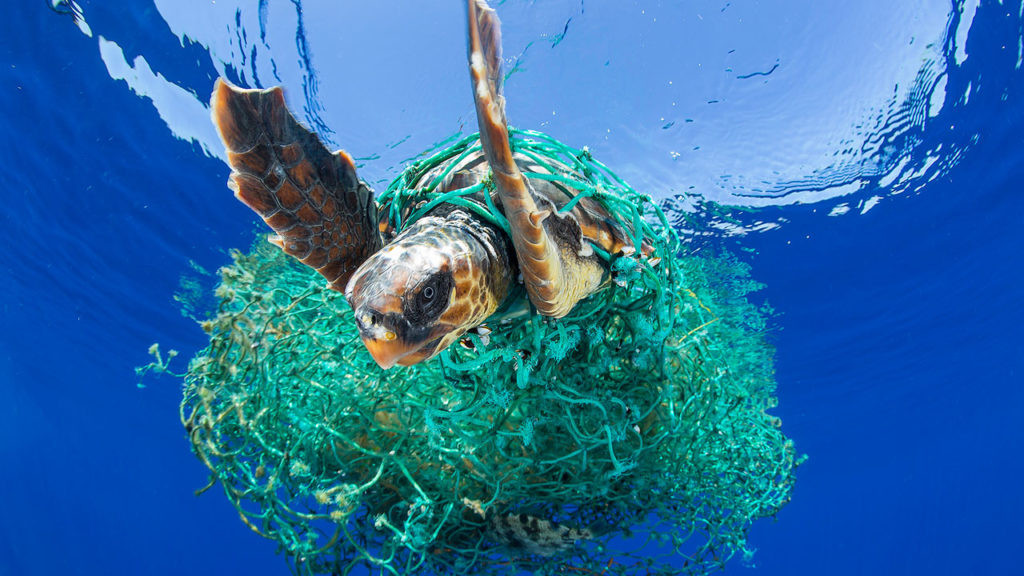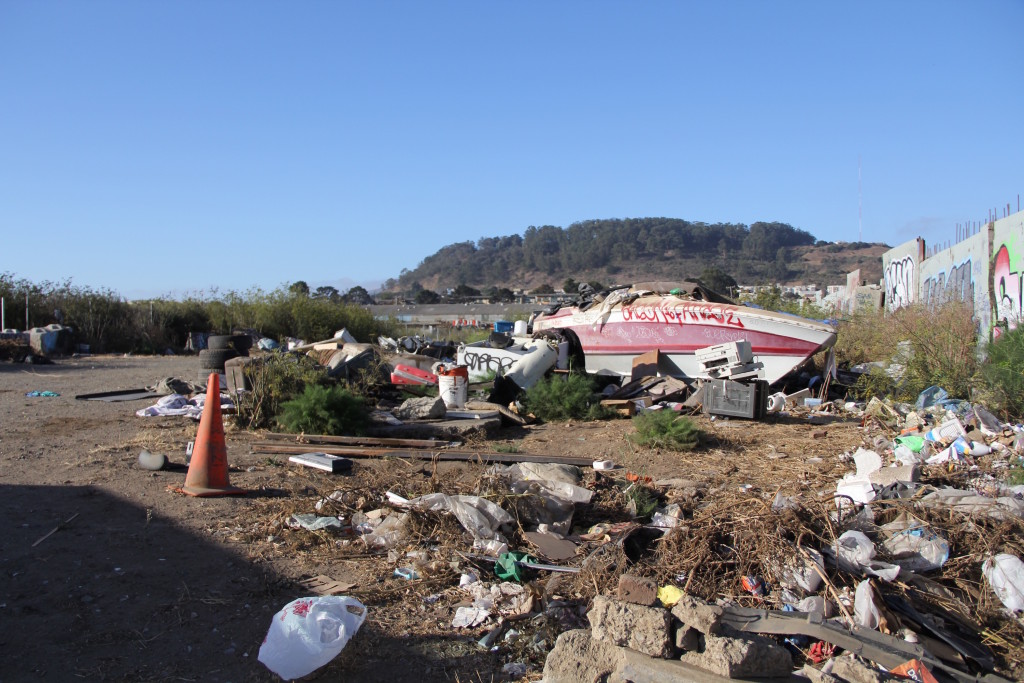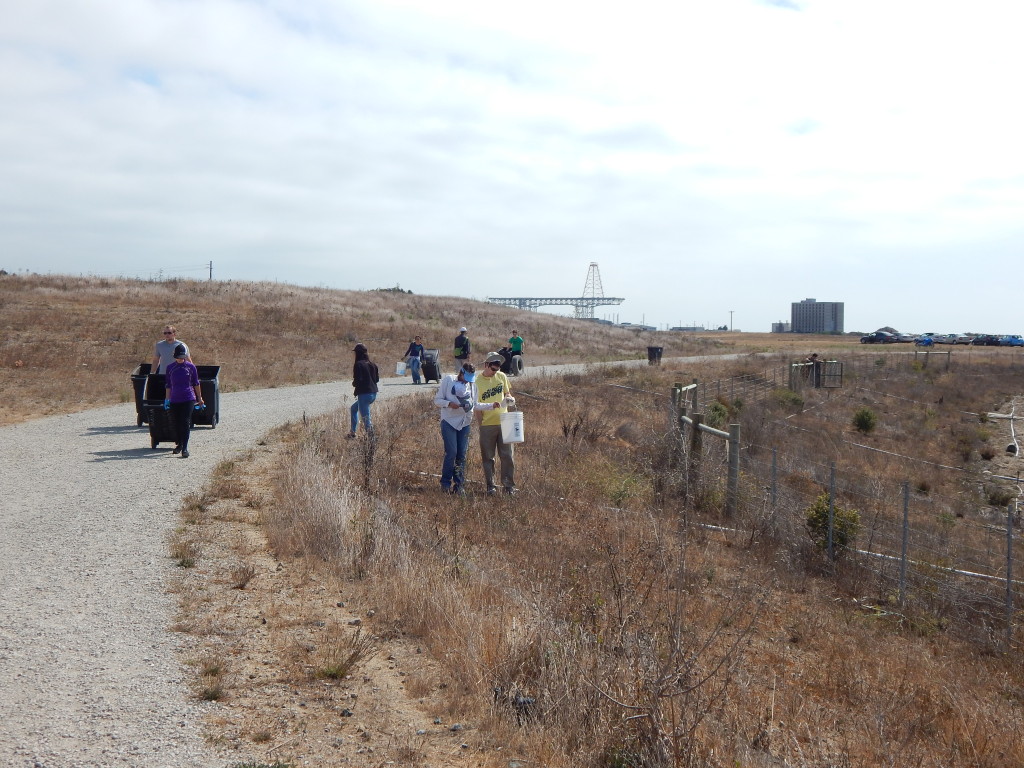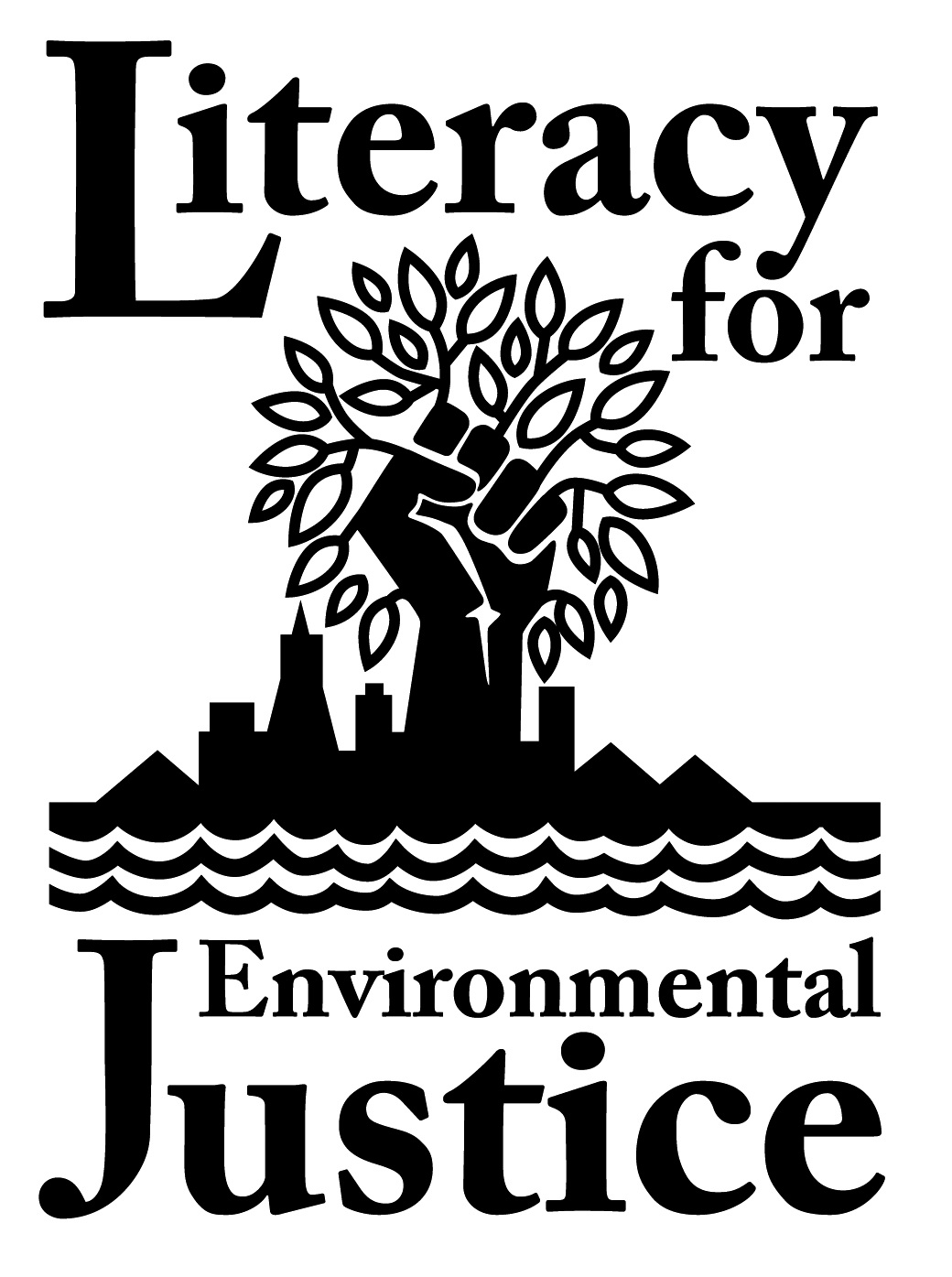Literacy for Environmental Justice is hosting Coastal Cleanup activities on Saturday, September 15.
You can join one of our three locations. Click here to register. All events are from 9am-12pm.
- Candlestick Park: Jackrabbit
- Candlestick Point: Yosemite Slough North
- Candlestick Point: Yosemite Slough South
Ildiko Polony, LEJ’s Nursery Manager, uses her experiences during last year’s Coastal Cleanup to reflect on challenges within the environmental justice community and explores why these volunteer days of service need to take place. While we must clean up the mess we have created, we must also stop making the mess in the first place.
LEJ has compiled a number of resources that can help you think about how to reduce your waste and reliance on plastic. Click here to view this list!
~~~~~~~~~~
Cleaning up the coasts is not an endeavor you can argue with, yet as Coastal Cleanup Day 2017 drew to a close and my team and I hauled away toters filled with trash, I had the sinking feeling that not only were we glossing over the cause of the problem, but that by channeling the volunteer energy into a 1-day cleanup effort without mentioning the root of the problem, we were actually distracting from it. Most of us know that humans are polluting our lands and our oceans. Many of us have seen images of marine bird carcasses with their bellies full of plastic, having starved to death because they have no room for real food. Over 1 million seabirds die annually due to marine debris.[note]“Ocean Plastic and Sea Turtles.” See Turtles. http://www.seeturtles.org/ocean-plastic. Accessed 11/19/17[/note] We can safely say that a vast majority of us wishes this weren’t the case. So it’s for good reason that International Coastal Cleanup Day, organized by the environmental NGO, Ocean Conservancy, is one of the single largest volunteer events in the world. As co-site captain for this day, leading volunteers to trash hot spots and giving them data cards to tally what they were collecting, I hoped one of our volunteers would raise the question, “what is the source of the trash and how can we stop the trash from piling up in the first place?” I looked for signs that the international organizers were tackling the answer. Until we work to stop the trash at its source, aren’t we just taking two steps forward and three steps back?

13 years ago, Literacy for Environmental Justice (LEJ) brought Coastal Cleanup Day to Southeast San Francisco. A low-income community of color, the neighborhood has historically seen a disproportionate amount of dumping, from bay infill to residential dumping to small-time contractors not wanting to pay to dump their construction debris and leaving it here instead; not to mention pollution spewed into the air from industrial activities concentrated in the Bayview. Notice these activities do not occur in the wealthy, white Pacific Heights neighborhood. This inequity is at the heart of the work that Literacy for Environmental Justice does, from employing local youth in Urban Greening, to strengthening the neighborhood with restoration projects at Candlestick Point State Recreation Area, to growing Native Plants and holding volunteer stewardship days. The environmental (in)justice extends to Coastal Cleanup day. The neighborhood harbors about 80% of trash dumped on the City’s shorelines annually, but receives only about 30% of the City’s volunteers on Coastal Cleanup Day.[note] Literacy for Environmental Justice e-newsletter. 8/29/2017. [/note] LEJ has worked hard over the years to tip these statistics, so it warmed my heart as the first volunteers trickled in 30 minutes ahead of schedule.
By the time the official start of the program rolled around more than 70 members of all ages from the Buddhist Light International Association had arrived from two Bay Area chapters, eager to spend the morning in service. They donned matching blue t-shirts and satin gold vests. Many had brought their own reused bags for trash collection, and their own, non-disposable work gloves. We tallied the durable tools as they checked in, giving these stellar volunteers an extra nod for their conservation-minded behavior. They were all smiles, photos, and chatter as they congregated, ready to be set loose on the trash-strewn bay.
While I applaud Ocean Conservancy’s efforts to encourage volunteers to bring their own reusable trash collecting receptacles, water bottles, and gloves, they did also provide us with copious amounts of plastic bottled water (turns out Crystal Geyser sponsors the event), disposable gloves and plastic bags, emblazoned with the Coastal Cleanup 2017 branding. And while I am truly grateful that their hearts are in the right place, every time I had to hand a volunteer disposable gloves and a plastic bag, or saw them reach for a plastic bottle of water, I thought “and how much waste are we generating in our effort to clean up waste?”
It was a beautiful sunny day, and the mood was high as people worked together in the outdoors and earned that warm fuzzy “do-good feeling.” I, in contrast, became increasingly distressed. No one is raising the question of why there is so much trash headed to our oceans in the first place. The volunteer event wrapped up 2.5 hours later. We took a group photo and congratulated ourselves, as well we should. Taking action is better than remaining disempowered, and action taken together builds community bonds that can carry forward in our work towards a more harmonious planet. However, with the congratulations, must come an honest look at the nature of the problem, its cause and our role in creating it, only then can we figure out what really is the most effective way of solving it. As the day wrapped up and our youth interns helped make the rounds along Candlestick’s beaches, collecting toters filled with trash, discarded appliances, burned out shopping carts, old tires, construction debris, mattresses, etc, and loaded them into the truck, I asked the youth,
“So what is the moral of today?”
“Don’t litter and tell other people not to litter,” replied the most charismatic and least shy of the group. Wrong, I thought and tried to explain in a gentler tone than I felt, that this is a common, and intentionally crafted misconception.

The History of Trash
Before the industrial revolution, there was no such thing as trash. Goods were handcrafted with resources available in the surrounding countryside and used and repaired and repurposed until they could be used no more. The resulting remains were small, and largely products that when discarded into the landscape, left no toxic residue. Coming from the earth in the first place, these pieces, in a relatively short time, decomposed back into the earth.
As the Industrial Revolution took hold and mass production flooded the marketplaces, mass consumption, aided by its young partner, advertising, slowly became the norm, and trash began to pile up in urban centers for the first time. Still, this waste was largely recycled back into industrial manufacturing. Resources were just too precious and transportation to and from the source of these resources, too expensive, that a haphazard industry of urban trash collectors and pickers was formed, who made a living off of collecting, sorting and selling trash in our urban centers. It wasn’t until plastics came on the scene, that the concept of “disposable,” (a natural evolution from tactics to increase consumption already underway, like built-in obsolescence and fashions that must always stay “current”) entered mainstream consciousness, and modern-day consumer culture really began.
Plastic, invented in the late 1800s got its day in the sun when the production needs of World War II necessitated massive outputs for the war machine. Government subsidies to the plastics industry coupled with government wartime production quotas, created a plastics economy of scale and here-to-for unseen innovations in the types, colors, shapes, durability, and textures of plastics. Once the war ended, the newly inflated industry needed a place to put all their plastic production in order to realize the incredibly profitable potential of plastic products for the civilian market. At the start of the war no household goods were made of plastics, at the end of the war everything could be made of plastics, and made cheaply. Gone was the resource pressure that wood, metals, and ceramics held over industry. But as the market became saturated with durable household items, industry had to figure out how to keep the consumption up to speed with their outputs in order to realize “the profitability of repetitive consumption.” [note] “Made to Break” http://grist.org/article/grossman1/ [/note] At a 1956 conference for the Society of Plastics Industries, members were told “you’re future is the garbage wagon!” [note]Rogers, Heather. Gone Tomorrow: The hidden life of garbage. 121. 2005. The New Press. New York. [/note] The only way to get people to buy more plastic was to train them to throw what they had away. Coming out of the great depression and wartime rationing, our natural instinct was to wash out the plastic cup and save it. Generations of thrifty reuse and an ethic of conservation had to be marketed out of existence.
The 1950s saw an explosion of household plastic products as well as increased expenditures on advertising of more than five times pre-war levels. [note] Rogers, Heather. Gone Tomorrow: The hidden life of garbage. 189. 2005. The New Press. New York. [/note] Convenience and cleanliness became the plastics manufacturers marketing buzzwords to justify the purchase of new disposable items, and cooperative municipal governments which created garbage hauling services, helped deal with the problem of mounting garbage piles. It was advertising coupled with public waste management services that enabled the takeover of disposable plastic products and packaging.
This consume/discard mentality didn’t only apply to products marketed as disposable; “disposable” was just the final iteration of a mounting trend. Things that just a few years earlier were considered items to be bought once and used for a lifetime, became things to be switched out every few years. Built-in obsolescence grew to be an industry standard and buying a whole new record player (or a pair of shoes, suitcase, vacuum cleaner, lamp, etc.) rather than fixing or repurposing the old one, became the norm. In spite of technological stop-gap measures like landfills, incinerators, and garbage compressors, even recycling, the new non-biodegradable nature of our trash means there’s no such place as “away.”
So the trash, or “litter,” piles higher and higher in our streets, parks, and beaches, and anywhere humans go, our garbage trails behind us. Keep America Beautiful, a marketing and public relations organization founded by beverage companies and packaging executives in 1953, has consistently pulled the conversation away from the producers of the trash and toward consumers. A 1971 campaign to “keep litter in its place,” was one of the most successful marketing campaigns in American History.[note] Royte, Elizabeth. 2005. Garbage Land: on the secret trail of trash. p 184. Back Bay Books. New York. [/note] A new term, “Litter” was popularized by industry in order to take the onus off of the manufacturers making the trash in the first place, and onto the individual, as the wrongdoer. It was a public relations battle fought and won by those truly responsible for the problem, and a classic case of greenwashing. Coastal Cleanup Day, and our interns takeaway “don’t litter and tell other people not to,” speaks to this diversion of the problem away from its source and to its manifestation. It is our massively inflated consumption habits and the system that created them and is dependent upon them, that truly needs to be dealt with.
As we’ve seen, disposability is a made-up concept, one that does not exist in Nature. One animal’s waste is another creature’s food. Without this waste, or byproduct of a living beings metabolism, other life wouldn’t survive. In less than 100 years, humans have been the first creatures on the planet to create a multitude of substances that the earth systems, in other words, other living things, have never seen before and thus have no way of metabolizing. We are creating things that don’t die and aren’t consumable, and therefore lie outside of the earth’s natural cycles. Our modern waste, unless it comes from our bodies, the leftovers from the food we eat, or we happen to use biodegradable products, is not another being’s food. And so it sits, and it piles up and it ends up in the bellies of creatures unable to digest it.
Capitalism, Consumption, Pollution, and Destruction
Meanwhile, our economic system, dependent on growth, chugs on in linear “progress,” mowing through the cyclical laws that bind life together. The problem with having a culture obsessed with linear progress is that lines have a beginning and an end. I fear we are reaching this end. The plastic producers (and any other publicly traded company) must, by law, prioritize bringing a profit to their shareholders, falling under the same need to grow, as the entire system does. This need to grow is the fundamental, unworkable flaw. An economic system predicated on perpetual growth is, by its very nature, unsustainable and is the reason for grossly excessive consumption and the ensuing waste, pollution and trash dumped into our environment. With the inequality inherent in capitalism, those in the poorest countries and the poorest neighborhoods bare the brunt of this pollution. This injustice is at the heart of LEJ’s work. Capitalism’s growth imperative is at the core of the environmental crisis that we find ourselves teetering on the brink of. The implications of the disconnect of our economic system from the natural order under which, like it or not, it operates, undermines our entire socio-economic system, and yet the more we ignore it, the more irreparable damage is done. Not only is runaway production, consumption, waste and pollution, fueled by an energy economy that is literally warming our planet threatening the stability of advanced civilization, scientists also warn it is in the process of bringing down 75% of the world’s species.[note] Drake, Nadia. June 23, 2015. “Will Humans Survive the 6th Great Extinction?” National Geographic. https://news.nationalgeographic.com/2015/06/150623-sixth-extinction-kolbert-animals-conservation-science-world/. Accessed 11/20/17. [/note]
Ocean Conservancy has a responsibility to call out the heart of the problem, yet, a search on their website reveals no real analysis of what the root of the trash problem actually is. Claiming “We prevent trash from entering the waters by working with everyone from individuals to businesses to change the products, practices and behaviors that lead to ocean trash.”[note] OceanConservancy.org. “The Solution.” Accessed 12/28/17. https://oceanconservancy.org/trash-free-seas/ [/note] When clicking on the link provided you are led to the Trash Free Seas Alliance and told of a multi-stakeholder alliance working to solve the problem, without clearly explaining how. These stakeholders include The World Plastics Council, Dow Chemical Company (a major plastics producer), the Coca-Cola company, Covanta (a waste service provider) and Keep America Beautiful – remember them? As we have learned, beverage and plastics companies strategically worked to prevent real solutions which would have halted the production of the trash that happened to be their source of profit. And, if it weren’t for municipal garbage services, a highly profitable industry, “littering” wouldn’t have been a problem that was “solvable.” To see Ocean Conservancy allied with companies ranging from the producers of plastics, to the beverage companies refusing to take responsibility for their disposable packaging, to the waste management companies profiting off of the waste, it becomes glaringly obvious why the root cause of the trash in the ocean was not addressed on Coastal Cleanup Day.
That means it’s up to us. If we choose to participate in Coastal Cleanup day, partner organizations and site captains on the ground with the volunteers have an even greater responsibility to talk about the root of the problem. Our integrity is not the only thing on the line, so is the air we breathe, the water we drink, the stability of the climate human civilization has evolved within and the other creatures we share this planet with. Coastal Cleanup Day, as the largest volunteer event in the world, is a tremendous opportunity to get a very important message out; that our economic system dependent on perpetual growth is killing us. It gives us a place to put our grief, fear, and anger, and this is a very valuable service. It is also a necessary band-aid. We must clean up the damage we have done to the coasts, the oceans and beyond. However, we must recognize that it is just this, a band-aid, meanwhile we continue stabbing ourselves with seemingly increased fervor. The alliances that organizations like Ocean Conservancy choose to keep may shed some light on why we continue gouging the same wound. Not surprisingly, plastics production is only increasing annually worldwide, as is disposability generally.[note] World Watch Institute. Jan 28, 2015. “Global Plastic Production Rises. Recycling lags.”http://www.worldwatch.org/global-plastic-production-rises-recycling-lags-0. Accessed 11/19/17. [/note] Last year, the fossil fuel industry (plastics comes from petroleum) invested $180 billion into plastics manufacturing predicting a 40% increase in the production of plastic packaging.[note] The Guardian. “$180 bn Investment in Plastic Factories, feeds glaobla packaging binge.” Dec 27, 2017. https://www.theguardian.com/environment/2017/dec/26/180bn-investment-in-plastic-factories-feeds-global-packaging-binge. Accessed 8/9/18. [/note] Until we address the over-reliance on “disposable” products, on plastics, and on hyper-consumption, no amount of Coastal Cleanup will truly solve our problem.
We must move away from a disposable society and toward a durable one. We must begin to bring our economy in sync with the planet’s natural cycles. We must begin to treat our resources and our people as precious and make the connection between the things we buy, with the earth’s resources which they come from and the people who make them and are impacted by their disposal. Life is not meant to be thrown away. As we articulate the larger problem and our collective responsibility of creating it and solving it, to the eager volunteers who have come to do good, we must do so with compassion and with honesty, while shining the light in the direction of the better world we all know in our hearts to be possible. To stop the flow of trash into the oceans we must phase out disposability and transform our consumer culture into a conservation culture. We, as the NGOs leading volunteers to the trash-strewn beaches must pledge to do better and set the example, as we hold Ocean Conservancy accountable to do the same, and at the same time offer opportunities for people to be engaged with the better world we all wish to create.

Photo Credits:
Sea Turtle: Francis Pérez
Trash: Literacy for Environmental Justice
Volunteers at LEJ’s Coastal Cleanup: Justin Clark
